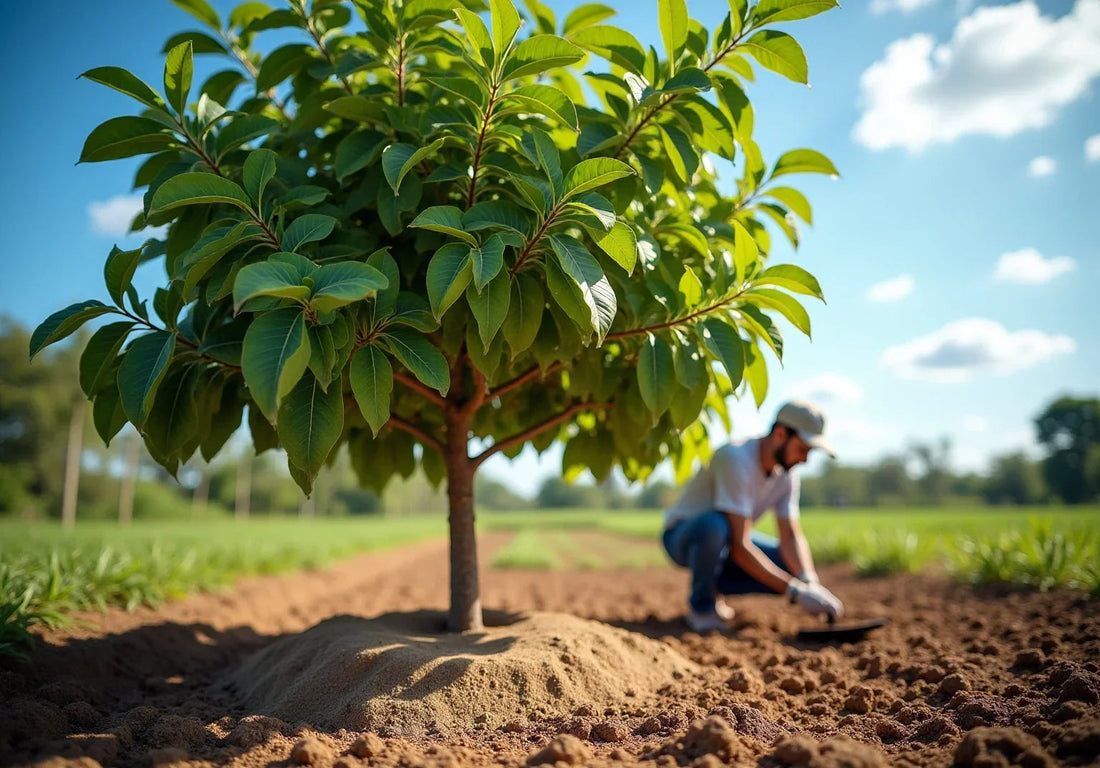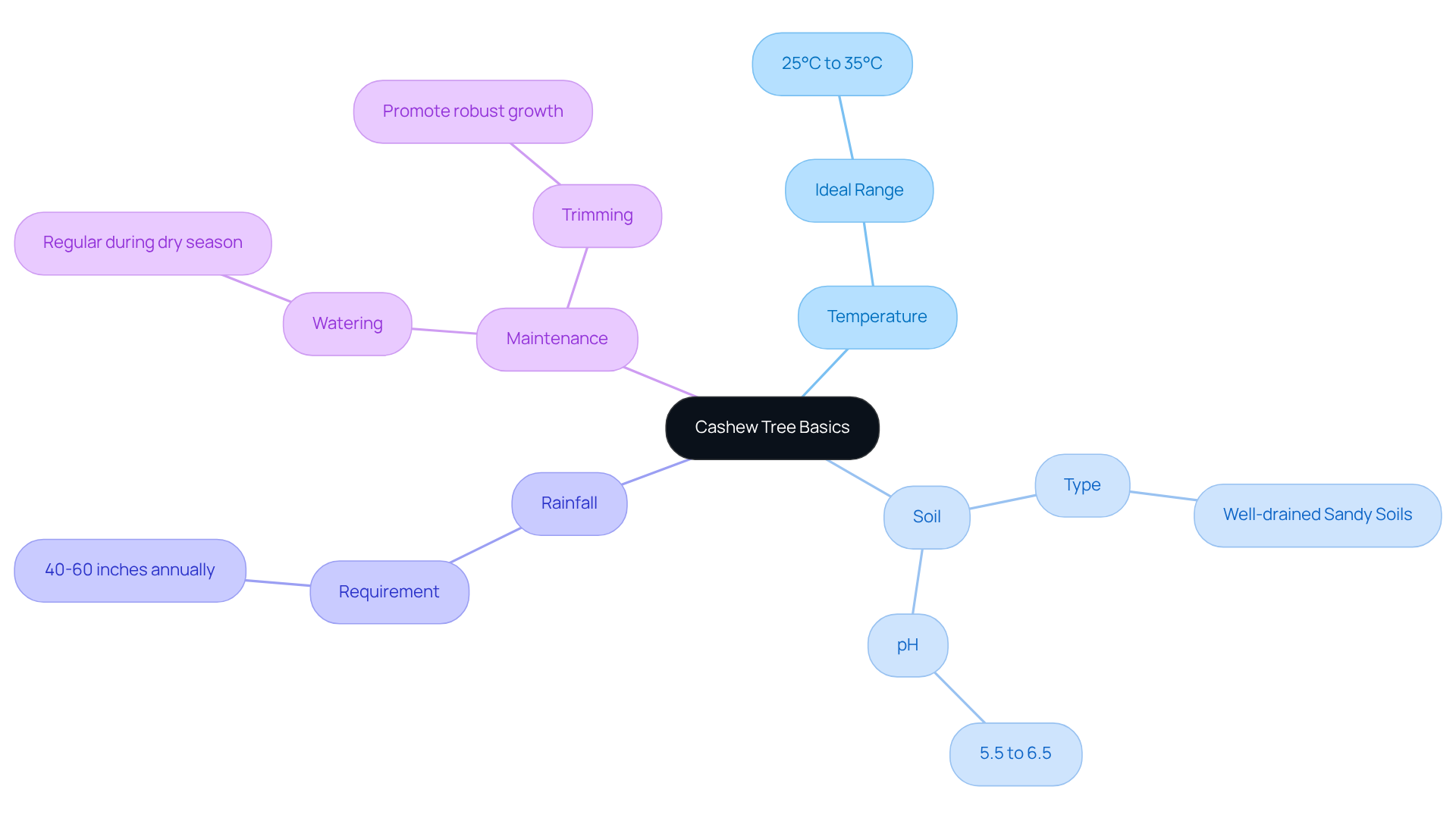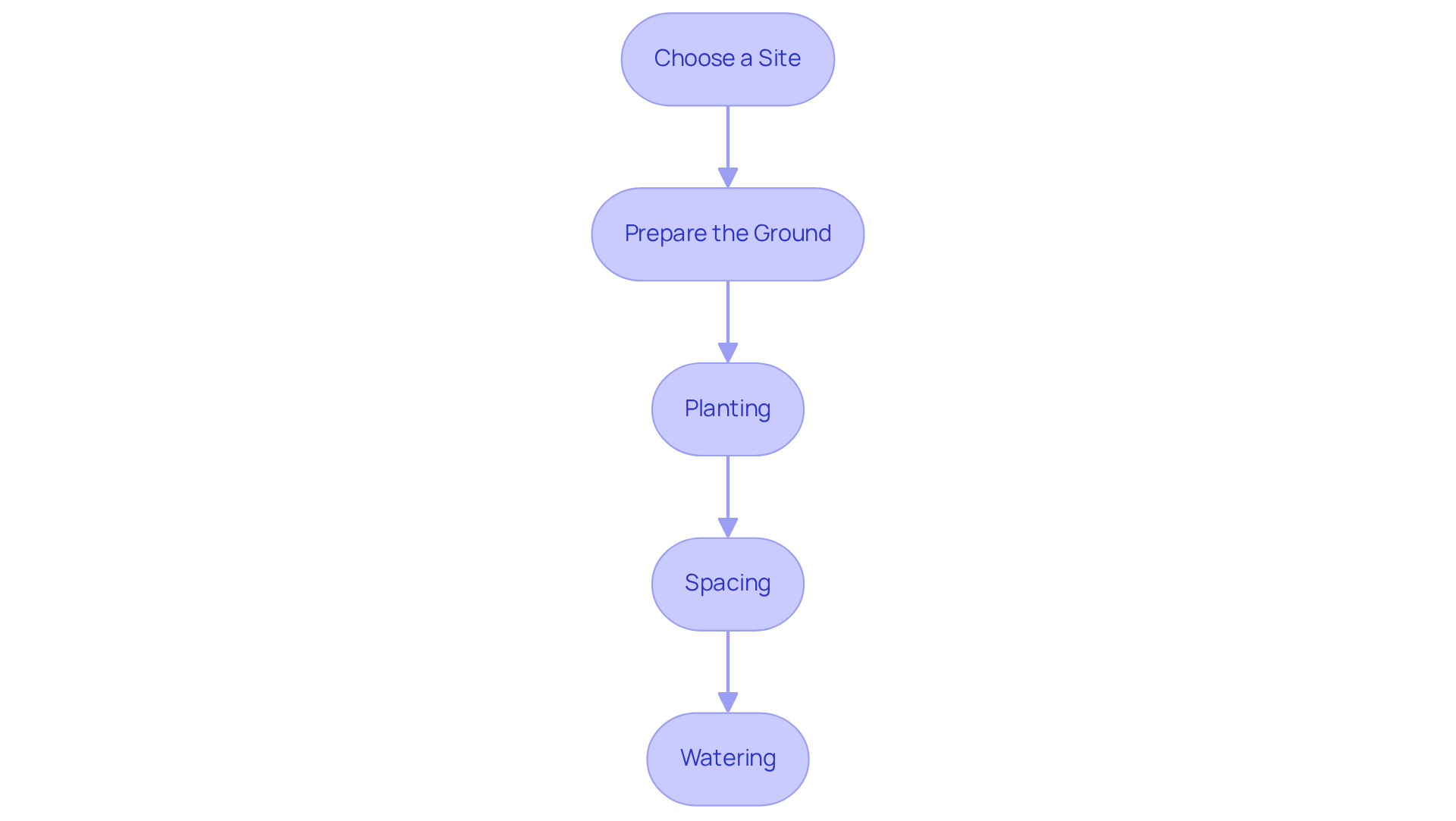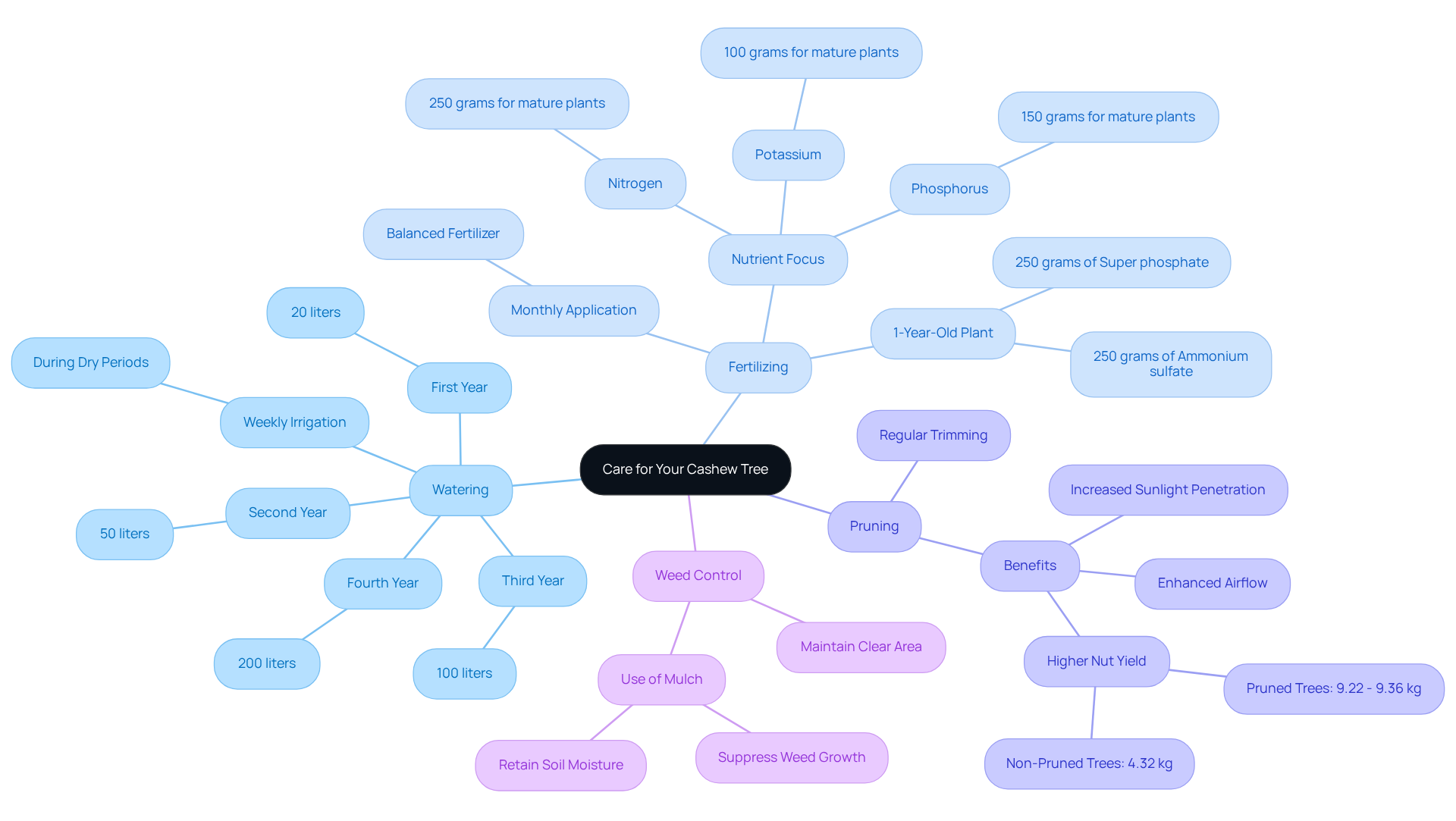
Master Your Cashew Tree: Steps for Successful Cultivation
Share
Cultivating a cashew tree can be a rewarding endeavor, yet it necessitates a nuanced understanding of its specific growth requirements and care practices. Selecting the right soil and climate, along with implementing effective watering and fertilization strategies, plays a crucial role in ensuring a healthy and productive tree.
However, many aspiring growers encounter challenges such as:
- Pest infestations
- Nutrient deficiencies
- Adverse weather conditions
These challenges can jeopardize their efforts. To achieve successful cashew tree cultivation, it is essential to understand the key steps and best practices, as well as how to navigate the common pitfalls that may arise along the way.
Thinking about growing a Cashew tree in your garden?
Explore the Cashew Trees collection at Everglades Farm - shipped directly from Florida.
1. Understand Cashew Tree Basics
Cashew trees thrive in warm, humid climates, ideally within a temperature range of 25°C to 35°C (77°F to 95°F). These trees flourish in well-drained sandy soils with a pH between 5.5 and 6.5, which are crucial for optimal growth and fruit production.
Healthy nut seedlings should be at least 6 months old before planting, ensuring they have developed sufficiently to adapt to their new environment. Furthermore, these plants require 40-60 inches (100-150 cm) of rainfall each year, making it essential to select a site that offers full sun exposure and protection from severe weather conditions.
Horticulturists emphasize that maintaining these environmental factors is vital for successful cultivation, as the cashew tree requires consistent warmth and minimal moisture stress to produce healthy yields. Regular watering, particularly during the dry season, is crucial for sustaining ideal development conditions.
Additionally, trimming young plants is essential to promote robust growth and fruit yield. By understanding these fundamental needs, you can create an optimal environment for your nut plants, leading to vigorous growth and abundant fruit.

2. Plant Your Cashew Tree
To successfully plant your cashew tree, follow these essential guidelines:
- Choose a Site: Select a sunny area with well-drained sandy soil, steering clear of locations prone to waterlogging, as this can hinder growth.
- Prepare the Ground: Loosen the soil to a depth of at least 12 inches, incorporating organic matter such as compost to improve fertility and drainage. Additionally, consider using NPK fertilizers that contain zinc, boron, and copper for optimal growth, as these micronutrients are vital for robust root development.
- Planting: For seeds, place them directly into the ground at a depth of 1-2 inches. If planting a young sapling, dig a hole that is twice the size of the root ball, position the sapling in the center, and backfill with soil, ensuring there are no air pockets.
- Spacing: Maintain approximately 30 feet between plants to accommodate their mature size and foster healthy growth. High-density planting options may also be considered based on your space and management preferences.
- Watering: After planting, thoroughly irrigate the plant to compact the soil around the roots. Young cashew trees require weekly watering to establish their roots, so it is important to provide consistent moisture, particularly during dry spells, to support their establishment and growth.
As Mahatma Gandhi wisely noted, "To forget how to dig the earth and to tend the soil is to forget ourselves," underscoring the importance of nurturing the land for successful gardening.

3. Care for Your Cashew Tree
Caring for your cashew tree requires several key practices that are essential for its growth and productivity.
-
Watering: Young cashew plants require consistent irrigation, particularly during dry spells. It is crucial to water deeply but infrequently, which encourages the development of a robust root system. For ideal development, young plants should receive specific quantities of water according to their age:
- 20 liters in the first year
- 50 liters in the second year
- 100 liters in the third year
- 200 liters in the fourth year.
Weekly irrigation is recommended during prolonged dry periods to ensure healthy growth.
-
Fertilizing: Implementing a structured fertilization schedule is vital. Apply a balanced fertilizer every month throughout the growing season, focusing on those rich in nitrogen, phosphorus, and potassium, as these nutrients are crucial for supporting healthy growth and enhancing fruit production. For fully grown plants, specific application rates include:
- 250 grams of nitrogen
- 150 grams of phosphorus
- 100 grams of potassium.
For a 1-year-old plant, it is advisable to apply 250 grams of Super phosphate and 250 grams of ammonium sulfate.
-
Pruning: Regular trimming is essential for maintaining the health of your cashew tree. Removing dead or diseased branches and shaping the plant enhances sunlight penetration and airflow. Agronomists emphasize that appropriate pruning not only hinders disease but also significantly increases nut yield, with pruned plants producing between 9.22 to 9.36 kg of seeds each, compared to non-pruned plants, which yield merely 4.32 kg.
-
Weed Control: Maintaining the area around your nut plant clear of weeds is crucial to reduce competition for nutrients and water. Utilizing mulch can effectively suppress weed growth while retaining soil moisture, creating a healthier environment for your plant to thrive.

4. Troubleshoot Common Cashew Tree Issues
Common issues with cashew trees include:
-
Pest Infestations: Pests such as aphids and caterpillars can significantly affect the health of plants, with infestations resulting in yield losses of up to 54.8% due to pests like Analeptes trifasciata. Employ organic insecticides like neem oil or introduce beneficial insects, such as ladybugs, to naturally control pest populations. This approach not only safeguards the plants but also fosters a balanced ecosystem in your garden.
-
Fungal illnesses, especially powdery mildew, pose a threat to the cashew tree. To mitigate this, ensure adequate airflow around the tree by proper spacing and pruning. Avoid overhead watering to lower humidity levels, which can worsen fungal development. Regular monitoring and early intervention are key to managing these diseases effectively.
-
Nutrient Deficiencies: Yellowing leaves often indicate nitrogen deficiency, which can hinder growth and fruit production. Perform a ground test to determine particular nutrient requirements and improve the earth with suitable fertilizers, such as compost or organic nitrogen sources, to restore balance and encourage healthy foliage.
-
Water Stress: Both overwatering and underwatering can lead to serious issues like root rot or wilting. Regularly monitor soil moisture levels and adjust your watering schedule accordingly. Establishing a drip irrigation system can assist in preserving steady moisture for your cashew tree without oversaturating the roots, ensuring ideal growth conditions.
-
Impact of Extreme Weather: Extreme weather events can exacerbate pest outbreaks and crop production challenges. Farmers have reported using adaptation strategies such as crop diversification and irrigation practices to cope with these conditions, which can help mitigate the effects of climate variability on the cashew tree.

Conclusion
Mastering the cultivation of cashew trees necessitates a thorough understanding of their specific needs and the implementation of effective growth and care practices. Successful cashew farming hinges on creating an environment that offers optimal temperature, suitable soil conditions, and adequate moisture. By adhering to these fundamental aspects, growers can ensure their trees thrive and yield bountiful harvests.
Key insights shared throughout this article encompass the significance of:
- Site selection
- Proper planting techniques
- Ongoing maintenance practices such as watering, fertilizing, and pruning
Addressing common challenges, including pest infestations and nutrient deficiencies, is equally crucial; proactive measures can safeguard the health of the trees and enhance overall productivity.
Ultimately, cultivating cashew trees transcends mere gardening; it embodies a commitment to nurturing the land and fostering sustainable agricultural practices. By applying the techniques and tips outlined, aspiring farmers can embark on a rewarding journey toward successful cashew cultivation, contributing to both personal satisfaction and broader agricultural goals. Embrace the opportunity to grow and care for these unique trees, ensuring a fruitful harvest for years to come.
Cultivate Your Own Tropical Paradise Today!
Start growing healthy cashew trees with Everglades Farm and enjoy bountiful harvests in your backyard.
🛒 Buy Cashew Tree (Pink Fruit)
🛒 Buy Cashew Tree (Red Fruit)
Frequently Asked Questions
What climate conditions are ideal for growing cashew trees?
Cashew trees thrive in warm, humid climates with temperatures ranging from 25°C to 35°C (77°F to 95°F).
What type of soil is best for cashew trees?
Cashew trees flourish in well-drained sandy soils with a pH between 5.5 and 6.5.
How old should cashew nut seedlings be before planting?
Healthy nut seedlings should be at least 6 months old before planting to ensure they can adapt to their new environment.
How much rainfall do cashew trees require annually?
Cashew trees require 40-60 inches (100-150 cm) of rainfall each year.
What are the key environmental factors for successful cashew tree cultivation?
Key factors include consistent warmth, minimal moisture stress, full sun exposure, and protection from severe weather conditions.
Why is regular watering important for cashew trees?
Regular watering, especially during the dry season, is crucial for sustaining ideal development conditions for cashew trees.
What maintenance practices are recommended for young cashew plants?
Trimming young plants is essential to promote robust growth and increase fruit yield.


